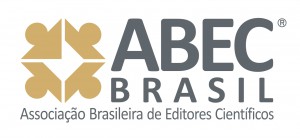Maternal perceptions on the use of baby carriers in healthy full-term infants in maternity hospitals and at home: an appreciative inquiry
DOI:
https://doi.org/10.5216/ree.v24.71351Keywords:
Kangaroo-Mother Care Method, Breast Feeding, Infant, Newborn, Rooming-in CareAbstract
Objective: to learn the perceptions of mothers on the experience of using baby carriers in healthy full-term babies, from birth to the fifth month of life. Methods: qualitative study, based on the methodological framework of Appreciative Inquiry, carried out with 23 mothers of full-term, healthy babies who used baby carriers in the maternity hospital and at home, in Goiânia, Goiás, Brazil. Interviews were carried out at the homes of the post-partum women. Thematic content analysis was used to analyze the data. Results: the mothers highlighted that using the kangaroo bag favors breastfeeding, improves the mothers’ autonomy, the babies’ comfort and sleep pattern, and strengthens family bonds. They also stated that it is necessary to disseminate knowledge and improve the ability to use the kangaroo bag. Conclusion: the use of the kangaroo bag was perceived as advantageous by mothers who made more frequent use of the strategy, but there are challenges to its adoption, including fear of accidents and perception of warmth or discomfort by mothers, which discourage its use.
Downloads
References
Slonecker EM. Altricial. In: Vonk J, Shackelford T, editors. Encyclopedia of Animal Cognition and Behavior. Cham: Springer International Publishing; 2017. doi: 10.1007/978-3-319-47829-6_1962-1
Widström A, Brimdyr K, Svensson K, Cadwell K, Nissen E. Skin‐to‐skin contact the first hour after birth, underlying implications and clinical practice. Acta Paediatr. 2019;108(7):1192-204. doi: 10.1111/apa.14754
Chaturvedi P. ‘Breast Crawl’ to initiate breast feeding within half an hour after birth. Journal of Mahatma Gandhi Institute of Medical Sciences. 2008;13:32. doi: 10.1186/s13006-018-0174-9
Bergman NJ. Birth practices: Maternal‐neonate separation as a source of toxic stress. Birth Defects Research. 2019;111(15):1087-109. doi: 10.1002/bdr2.1530
Charpak N, Ruiz JG, Zupan J, Cattaneo A, Figueroa Z, Tessier R, et al. Kangaroo Mother Care: 25 years after: Kangaroo Mother Care: 25 years after. Acta Paediatr. 2007;94(5):514-22. doi: 10.1111/j.1651-2227.2005.tb01930.x
Ministério da Saúde, Secretaria de Atenção à Saúde, Departamento de Ações Programáticas Estratégicas. Atenção humanizada ao recém-nascido: Método Canguru. Manual técnico. 3ª ed. Brasília: Ministério da Saúde; 2017 [cited 2022 Dec 28]. Available from: http://bvsms.saude.gov.br/bvs/publicacoes/atencao_humanizada_metodo_canguru_manual_3ed.pdf
Mekonnen AG, Yehualashet SS, Bayleyegn AD. The effects of kangaroo mother care on the time to breastfeeding initiation among preterm and LBW infants: a meta-analysis of published studies. Int Breastfeed J. 2019;14:12. doi: 10.1186/s13006-019-0206-0
Moore ER, Bergman N, Anderson GC, Medley N. Early skin‐to‐skin contact for mothers and their healthy newborn infants. Cochrane Database of Systematic Reviews 2016, Issue 11. Art. No.: CD003519. DOI: 10.1002/14651858.CD003519.pub4.
Charpak N, Angel MI, Banker D, Bergh A, Bertolotto AM, De Leon‐Mendoza S, et al. Strategies discussed at the XIIth international conference on Kangaroo mother care for implementation on a countrywide scale. Acta Paediatr. 2020;109(11):2278-86. doi: 10.1111/apa.15214
Cooperrider DL, Whitney D. Investigação apreciativa: uma abordagem positiva para a gestão de mudanças. Rio de Janeiro: Qualitymark; 2005
Souza LV e, McNamee S, Santos MA. Avaliação como construção social: investigação apreciativa. Psicol Soc. 2010;22(3):598-607. doi: 10.1590/S0102-71822010000300020
Schön RA, Silvén M. Natural Parenting - Back to Basics in Infant Care. Evol Psychol. 2007 [cited 2022 Oct. 15]; 5(1):147470490700500. doi: 10.1177/147470490700500110
Bardin L. Análise de conteúdo. 7ª ed. Lisboa: Edições 70; 2011
Esposito G, Coppola KB, Truzzi A. How Can I Make My Younger Sibling Stop Crying? Front. Young Minds. 4:28. doi: 10.3389/frym.2016.00028
Christensson K, Cabrera T, Christensson E, Uvnäs–Moberg K, Winberg J. Separation distress call in the human neonate in the absence of maternal body contact. Acta Paediatr. 1995;84(5):468-73. doi: 10.1111/j.1651-2227.1995.tb13676.x
Bastani F, Rajai N, Farsi Z, Als H. The Effects of Kangaroo Care on the Sleep and Wake States of Preterm Infants. J Nurs Res. 2017;25(3):231-9. doi: 10.1097/JNR.0000000000000194
Akbarian Rad Z, HaghShenas Mojaveri M, Zahed Pasha Y, Ahmadpour-Kacho M, Kamkar A, Khafri S, et al. The Effect of Kangaroo Mother Care on Fuss and Crying Time in Colicky Infants. Iranian Journal of Neonatology IJN. 2015;6(1):23-7. doi: 10.22038/ijn.2015.4152
Norholt H. Revisiting the roots of attachment: A review of the biological and psychological effects of maternal skin-to-skin contact and carrying of full-term infants. Infant Behav Dev. 2020;60:101441. doi: 10.1016/j.infbeh.2020.101441
Araújo KEAS, Santos CC, Caminha MFC, Silva SL, Pereira JDCN, Batista Filho M. Skin to skin contact and the early initiation of breastfeeding: a cross-sectional study. Texto Contexto Enferm. 2021;30:e20200621. doi: 10.1590/1980-265X-TCE-2020-0621h
Günay U, Şimşek DC. Emotions and Experience of Fathers applying Kangaroo Care in the Eastern Anatolia Region of Turkey: A Qualitative Study. Clin Nurs Res. 2021;30(6):840-6. doi: 10.1177/1054773820937479
Dongre S, Desai S, Nanavati R. Kangaroo father care to reduce paternal stress levels: A prospective observational before-after study. J Neonatal Perinatal Med. 2020;13(3):403-11. doi: 10.3233/NPM-180190
Ionio C, Ciuffo G, Landoni M. Parent–Infant Skin-to-Skin Contact and Stress Regulation: A Systematic Review of the Literature. Int J Environ Res Public Health. 2021;18(9):4695. doi: 10.3390/ijerph18094695
Pisacane A, Continisio P, Filosa C, Tagliamonte V, Continisio GI. Use of baby carriers to increase breastfeeding duration among term infants: the effects of an educational intervention in Italy. Acta Paediatr. 2012;101(10):e434-8. doi: 10.1111/j.1651-2227.2012.02758.x
Frisbee SJ, Hennes H. Adult-worn child carriers: a potential risk for injury. Inj Prev. 2000;6(1):56-8. doi: 10.1136/ip.6.1.56
Silva CS, Souza KV, Alves VH, Cabrita BAC, Silva LR. Atuação do enfermeiro na consulta pré-natal: limites e potencialidades. R Pesq Cuid Fundam. 2016;8(2):4087-98. doi: 10.9789/2175-5361.2016.v8i2.4087-4098
Downloads
Published
Issue
Section
License
Copyright (c) 2022 Revista Eletrônica de Enfermagem

This work is licensed under a Creative Commons Attribution 4.0 International License.














